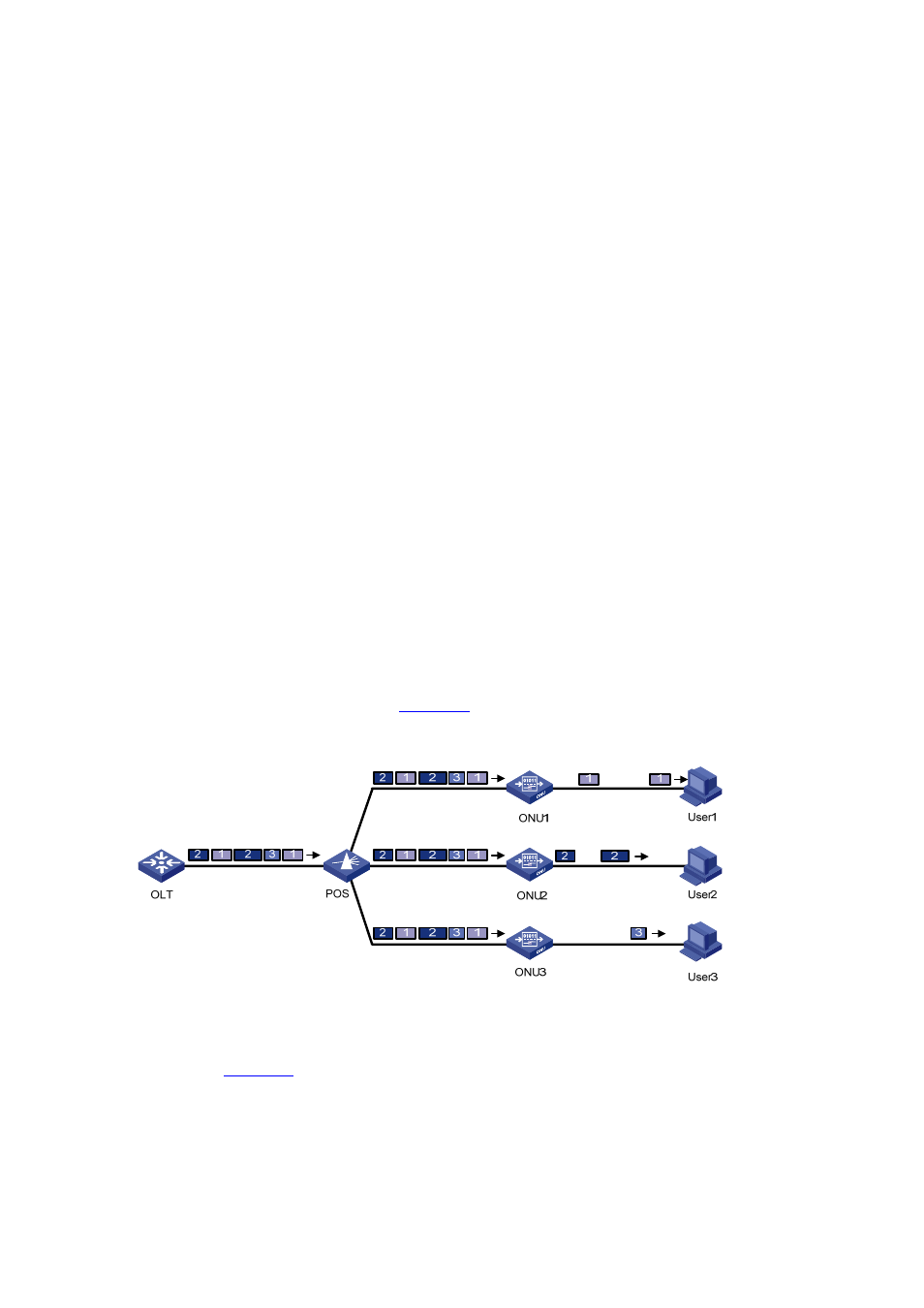Bandwidth allocation, Data transmission, Downlink data transmission – H3C Technologies H3C S7500E Series Switches User Manual
Page 38: Uplink data transmission, 5 data transmission

2-5
Bandwidth Allocation
Once the extended OAM connection is established, downlink data transmission can begin. Uplink data
transmission can begin only after uplink bandwidth is allocated.
In bandwidth allocation, mainly two types of MPCP messages: GATE and REPORT, are used:
A GATE message is sent by an OLT to assign a transmission timeslot to an ONU.
A REPORT message is sent by an ONU to feed back the local status information, such as buffer
occupancy, to the OLT, helping the OLT assign timeslots intelligently.
An OLT allocates bandwidth to an ONU as follows:
1) The OLT sends a GATE message to notify the ONU of the timeslot for sending a REPORT
message.
2) The ONU sends a REPORT message within the assigned timeslot to report its local status
information to the OLT.
3) Upon receiving the REPORT message from the ONU, the OLT, based on the current bandwidth of
the system, assigns the ONU a data transmission timeslot, which contains the start time and
length for transmitting data by the ONU.
4) The ONU receives the GATE message and waits for the arrival of the start time contained in the
GATE message. Once the start time is reached, data transmission begins.
5) The bandwidth allocation is complete.
Data Transmission
Downlink data transmission
Downlink data is broadcast to the ONUs, with each ONU receiving only the packets destined to it and
discarding other packets, as shown in
.
Figure 2-3
Downlink data transmission in an EPON system
Uplink data transmission
As shown in
, each ONU buffers the data frames received from users and sends the buffered
data frames at the full wire-speed (1000 Mbps) once the timeslot for the ONU arrives.
